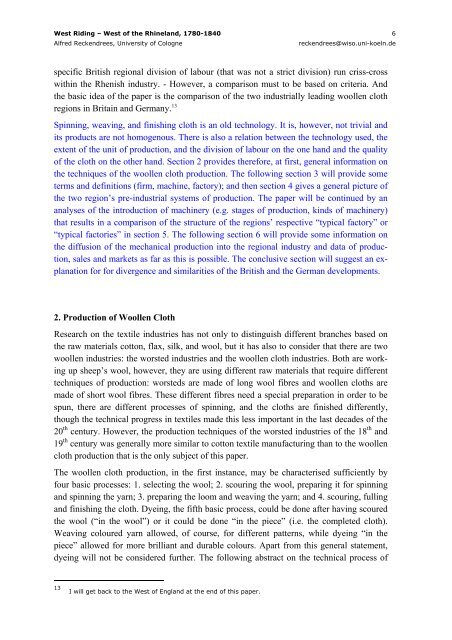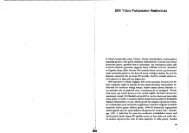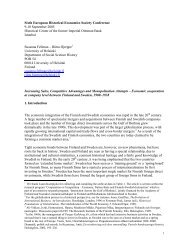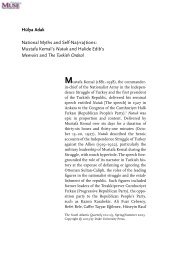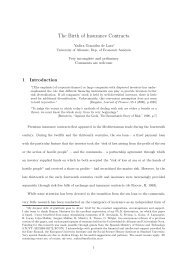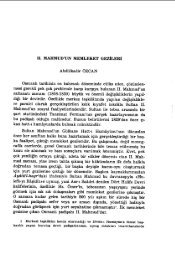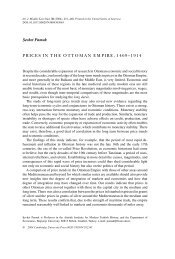West Riding – Western Rhineprovince, 1790-1840: Diverse Paths to ...
West Riding – Western Rhineprovince, 1790-1840: Diverse Paths to ...
West Riding – Western Rhineprovince, 1790-1840: Diverse Paths to ...
Create successful ePaper yourself
Turn your PDF publications into a flip-book with our unique Google optimized e-Paper software.
<strong>West</strong> <strong>Riding</strong> <strong>–</strong> <strong>West</strong> of the Rhineland, 1780-<strong>1840</strong> 6<br />
Alfred Reckendrees, University of Cologne reckendrees@wiso.uni-koeln.de<br />
specific British regional division of labour (that was not a strict division) run criss-cross<br />
within the Rhenish industry. - However, a comparison must <strong>to</strong> be based on criteria. And<br />
the basic idea of the paper is the comparison of the two industrially leading woollen cloth<br />
regions in Britain and Germany. 13<br />
Spinning, weaving, and finishing cloth is an old technology. It is, however, not trivial and<br />
its products are not homogenous. There is also a relation between the technology used, the<br />
extent of the unit of production, and the division of labour on the one hand and the quality<br />
of the cloth on the other hand. Section 2 provides therefore, at first, general information on<br />
the techniques of the woollen cloth production. The following section 3 will provide some<br />
terms and definitions (firm, machine, fac<strong>to</strong>ry); and then section 4 gives a general picture of<br />
the two region’s pre-industrial systems of production. The paper will be continued by an<br />
analyses of the introduction of machinery (e.g. stages of production, kinds of machinery)<br />
that results in a comparison of the structure of the regions’ respective “typical fac<strong>to</strong>ry” or<br />
“typical fac<strong>to</strong>ries” in section 5. The following section 6 will provide some information on<br />
the diffusion of the mechanical production in<strong>to</strong> the regional industry and data of production,<br />
sales and markets as far as this is possible. The conclusive section will suggest an explanation<br />
for for divergence and similarities of the British and the German developments.<br />
2. Production of Woollen Cloth<br />
Research on the textile industries has not only <strong>to</strong> distinguish different branches based on<br />
the raw materials cot<strong>to</strong>n, flax, silk, and wool, but it has also <strong>to</strong> consider that there are two<br />
woollen industries: the worsted industries and the woollen cloth industries. Both are working<br />
up sheep’s wool, however, they are using different raw materials that require different<br />
techniques of production: worsteds are made of long wool fibres and woollen cloths are<br />
made of short wool fibres. These different fibres need a special preparation in order <strong>to</strong> be<br />
spun, there are different processes of spinning, and the cloths are finished differently,<br />
though the technical progress in textiles made this less important in the last decades of the<br />
20 th century. However, the production techniques of the worsted industries of the 18 th and<br />
19 th century was generally more similar <strong>to</strong> cot<strong>to</strong>n textile manufacturing than <strong>to</strong> the woollen<br />
cloth production that is the only subject of this paper.<br />
The woollen cloth production, in the first instance, may be characterised sufficiently by<br />
four basic processes: 1. selecting the wool; 2. scouring the wool, preparing it for spinning<br />
and spinning the yarn; 3. preparing the loom and weaving the yarn; and 4. scouring, fulling<br />
and finishing the cloth. Dyeing, the fifth basic process, could be done after having scoured<br />
the wool (“in the wool”) or it could be done “in the piece” (i.e. the completed cloth).<br />
Weaving coloured yarn allowed, of course, for different patterns, while dyeing “in the<br />
piece” allowed for more brilliant and durable colours. Apart from this general statement,<br />
dyeing will not be considered further. The following abstract on the technical process of<br />
13 I will get back <strong>to</strong> the <strong>West</strong> of England at the end of this paper.


